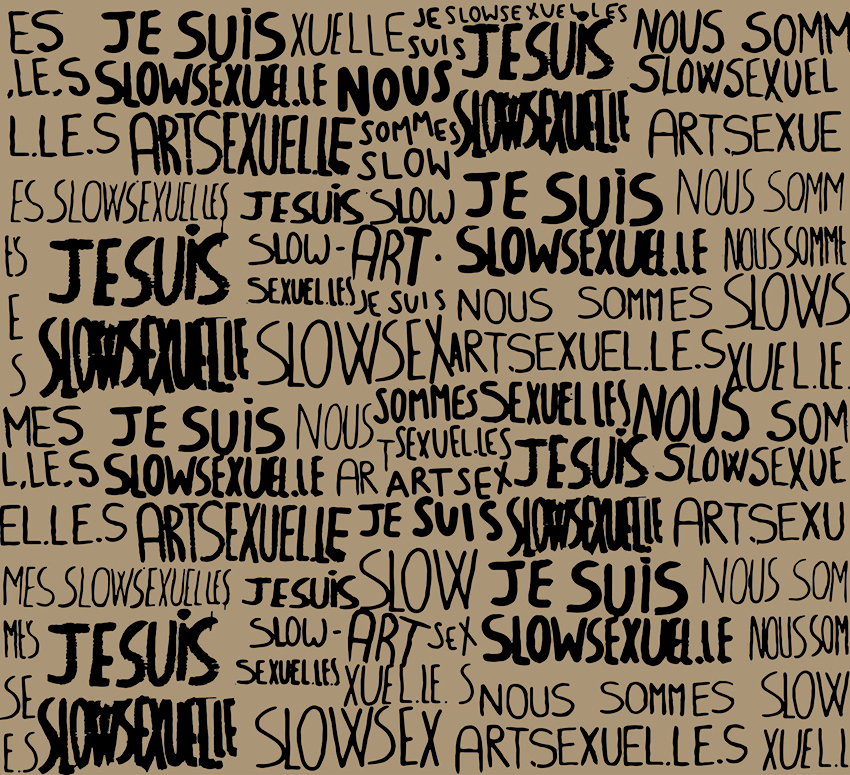Carnal Art / Art Charnel
Carnal Art
Definition :
Carnal Art is self-portraiture in the classical sense but made by means of today’s technology. It swings between defiguration and refiguration. Its inscription into the flesh is due to the new possibilities inherent to our age. The body has become a “modified ready-made”, no longer seen as the ideal it once represented, not ready enough to be adhered and signed.
Distinction:
Contrary to “Body Art” which is a different matter alltogether, Carnal Art does not long for pain, does not seek pain as a source of purification, does not conceive it as a redemption.
Carnal Art takes no interest in the result of plastic surgery, but in the process of the surgical-operation-performance and the modified body having become the subject of public debate.
Atheism:
Above all, Carnal Art does not follow Christian Tradition, it resists it!
Carnal Art reveals the Christian denial of the “pleasure-body” and exposes its weakness in the face of scientific discovery. All the less does it follow the tradition of suffering and martyrdom, adding rather than taking away, it enhances the faculties instead of reducing them. Carnal Art is no self-mutilation.
Carnal Art transforms the body into language. Reversing the biblical idea of the word made flesh, the flesh is made word. Only the voice of Orlan remains unchanged. The artist works on representation.
Carnal Art considers the acceptance of the agony of childbirth to be anachronistic and ridiculuous. Like Artaud if rejects the divine judgment.
Henceforth we shall have epidurals, local anaesthetics and multiple analgesics! Hurray for the morphine! (Long live morphine!). Down with the pain! (Down with pain!)
Perception :
I can observe my own body cut open without any suffering!…I can see myself all the way down to my viscera, a new mirror stage. I can see to the heart of my lover and its splendid design has got nothing to do with the soppy symbols usually drawn.
“Darling, I love your spleen, I love your liver, I adore your pancreas and the line of your femur excites me.”
Freedom :
Carnal Art declares and insists on the individual freedom of the artist. In that sense it resists prejudice and dictate. This is why it has engaged the social and the media (disrupting established ideas and causing scandal), going as far as to the court (in order to change Orlan’s name).
Clarification:
Carnal Art is not against plastic surgery, but opposes its standards such as engraved in the male, but particularly female flesh. It is indispensable for Carnal Art to feminist. It takes an interest in plastic surgery, but just as well in developments in medicine and biology questioning the status of the body and posig ethical problems.
Style:
Carnal Art loves mockery and the baroque, the grotesque and other neglected styles since it opposes itself to social pressures the burden of which is carried by both, the human body and the work of art.
Carnal Art is anti-formalist and anti-conformist.
ORLAN
CHARNEL ART
Definition:
L’Art Charnel is a work of self-portraiture in the classical sense, but with the technological means of its time. It oscillates between disfiguration and refiguration. It is inscribed in the flesh because our era is beginning to make it possible. The body becomes a “modified ready-made” because it is no longer the ideal ready-made that simply needs to be signed.
Distinction:
Unlike Body Art, from which it is distinguished, Charnel Art does not desire pain, does not seek it as a source of purification, does not conceive of it as redemption. L’Art Charnel is not interested in the final plastic result, but in the surgical operation-performance and the modified body, which has become a site of public debate.
Atheism
Clearly, Art Charnel is not the heir to the Christian tradition, against which it fights! He points to its denial of the “body-pleasure” and lays bare its places of collapse in the face of scientific discovery.
Nor is Art Charnel the heir to a hagiography of decollations and other martyrdoms; it adds rather than detracts, enhancing rather than diminishing faculties; Art Charnel is not intended to be self-mutilating.
L’Art Charnel transforms the body into language, overturning the Christian principle of the verb becoming flesh in favor of the flesh becoming verb; only Orlan’s voice remains unchanged, as the artist works on representation.
L’Art Charnel deems the famous “thou shalt give birth in pain” anachronistic and ridiculous, and like Artaud wants to do away with God’s judgement; we now have epidurals and multiple anaesthetics as well as analgesics, long live morphine! Down with pain!
Perception :
Now I can see my own open body without suffering!…I can see myself to the depths of my entrails, the new stage of the mirror. “I can see my lover’s heart, and its splendid drawing has nothing to do with the symbolic mawkishness usually drawn”.
– Honey, I love your spleen, I love your liver, I love your pancreas and the line of your femur excites me.
Freedom:
Art Charnel affirms the individual freedom of the artist, and in this sense it also fights against apriorisms and diktats; this is why it is part of the social scene, the media (where it causes scandal because it upsets received ideas) and even goes as far as the courts.
Focus:
L’Art Charnel is not against cosmetic surgery, but against the standards it conveys, and which are particularly inscribed in the flesh of both men and women. L’Art Charnel is feminist, as it should be. L’Art Charnel is interested not only in cosmetic surgery, but also in cutting-edge medical and biological techniques that call into question the status of the body and raise ethical issues.
Style:
Art Charnel loves the baroque and the parody, the grotesque and the styles left behind, because Art Charnel opposes the social pressures exerted on both the human body and the body of works of art.
L’Art Charnel is anti-formalist and anti-conformist.
ORLAN
